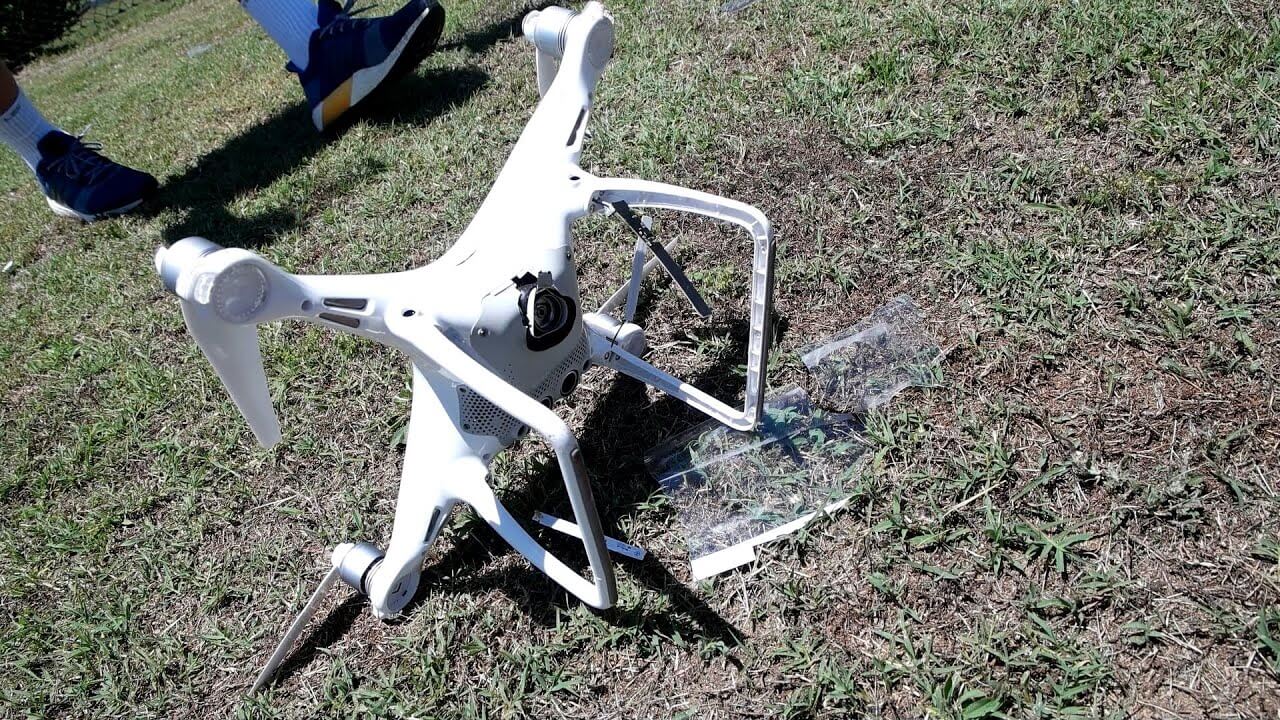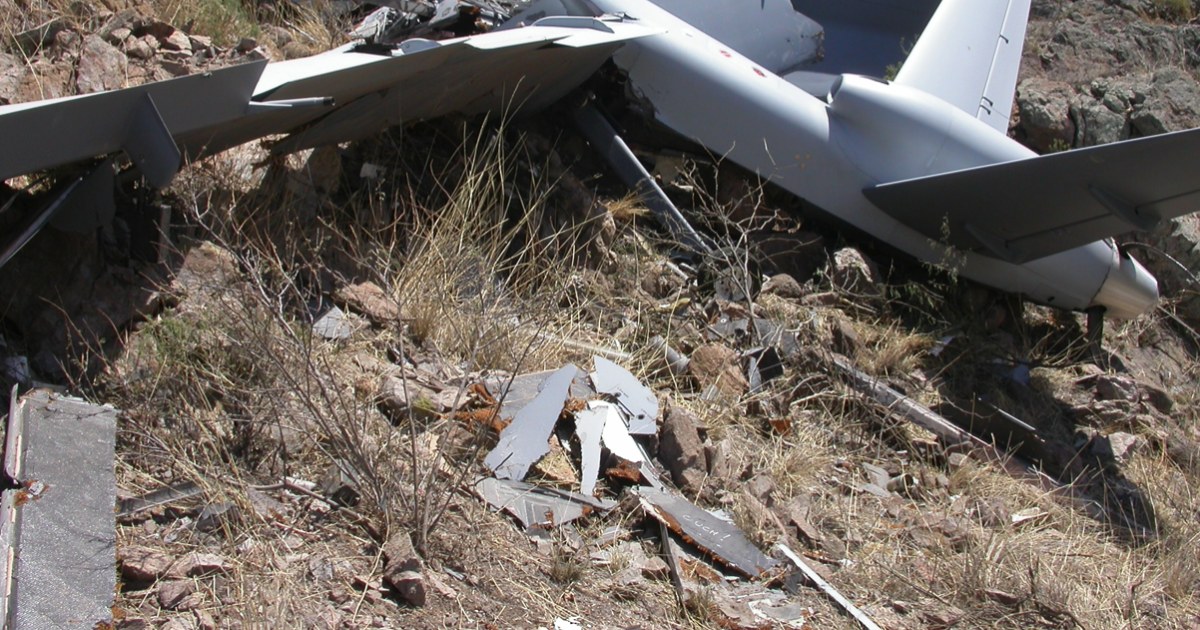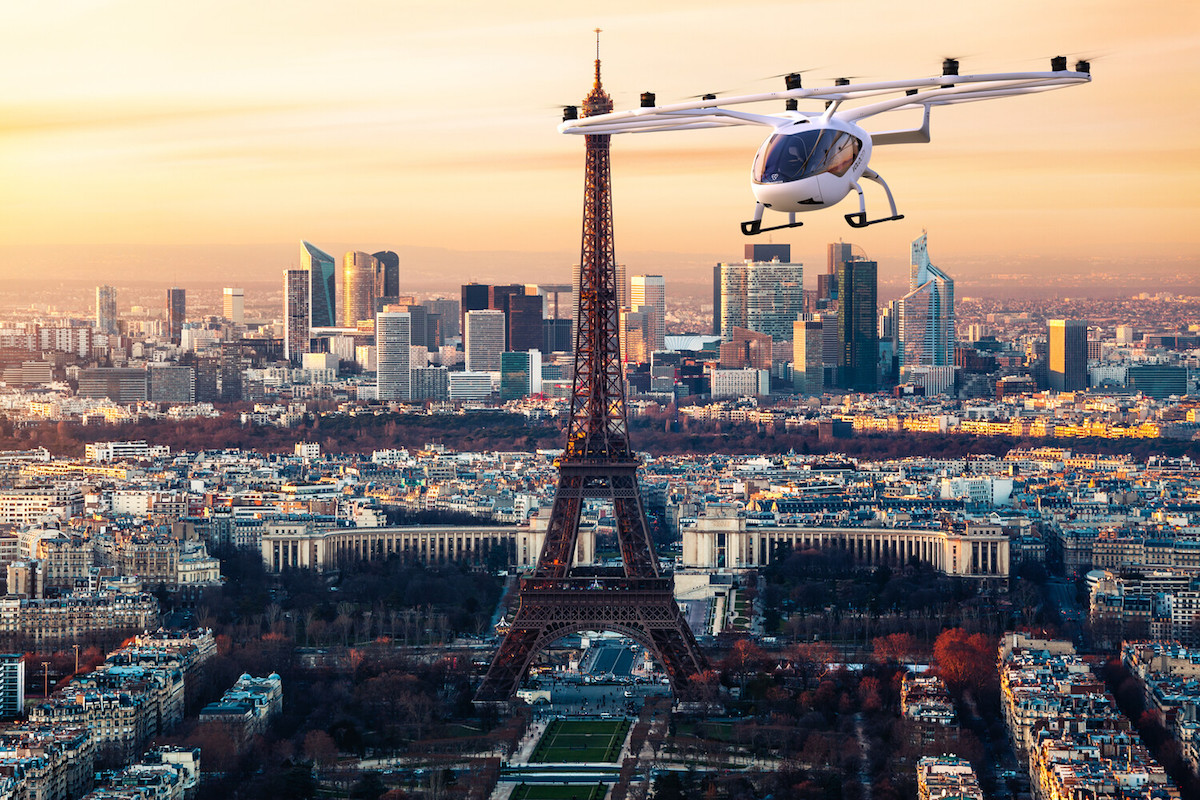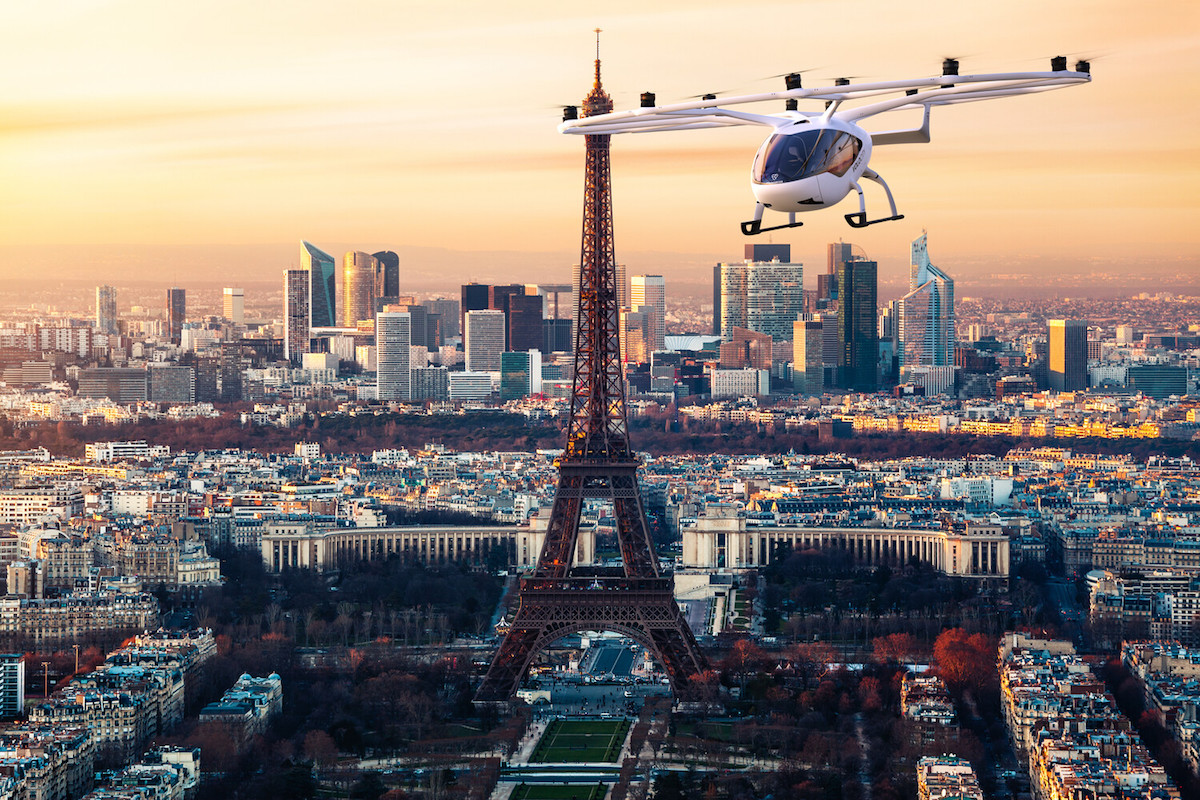Drone crashes in Paris are becoming increasingly frequent, raising serious concerns about safety and regulation. This isn’t just about damaged property; it’s about the potential for serious injury or even death. We’ll explore the causes of these incidents, examine the current regulatory landscape, and look at how technological advancements might improve safety in the future. Understanding this issue is crucial for both drone operators and the public.
This report dives into recent Parisian drone incidents, detailing the circumstances, damages, and types of drones involved. We’ll analyze the contributing factors, from pilot error and mechanical failures to weather conditions and air traffic density. We’ll also investigate the current regulations, proposing potential improvements to prevent future crashes and outlining public awareness campaigns for safer drone operation.
Recent Drone Crash Incidents in Paris

Paris, a city renowned for its iconic landmarks and bustling atmosphere, has also experienced its share of drone-related incidents in recent years. These incidents, while relatively infrequent compared to other urban areas, highlight the potential risks associated with drone operation in densely populated environments. Understanding the nature and impact of these crashes is crucial for improving drone safety regulations and preventing future occurrences.
Drone Crash Incidents Timeline
The following table summarizes significant drone crashes in Paris over the last five years. Note that this data may not be entirely exhaustive due to the potential underreporting of minor incidents. Information is compiled from publicly available news reports and official statements, where available. It’s important to remember that the accuracy of reported details can vary.
| Date | Location | Circumstances | Reported Damage |
|---|---|---|---|
| October 26, 2020 | Champ de Mars (near Eiffel Tower) | Drone malfunction during a tourist flight; crashed into a nearby tree. | Minor damage to the drone; no injuries or property damage reported. |
| May 12, 2022 | Tuileries Garden | Collision with a tree during an unauthorized flight. Pilot reportedly lost control. | Drone destroyed; minor damage to a nearby bench. No injuries reported. |
| August 18, 2023 | Louvre Museum (perimeter) | Drone suspected to be carrying illegal contraband; crashed after encountering police intervention. | Drone destroyed; minor damage to a security fence. No injuries reported. |
| December 5, 2023 | Notre Dame Cathedral (vicinity) | Drone reportedly malfunctioned during a nighttime flight. | Drone destroyed; no significant damage to the cathedral reported. No injuries reported. |
Types of Drones Involved
The drones involved in these incidents varied in size and capabilities. Reports suggest a mix of consumer-grade drones, likely used for recreational purposes or photography, and potentially some modified drones used for illicit activities. Specific drone models are rarely publicly identified in incident reports, often for privacy and investigatory reasons.
Impact of Drone Crashes
The impact of drone crashes in Paris has generally been limited. Most incidents resulted in only minor property damage to the drone itself or to nearby landscaping features. Serious injuries or significant structural damage to buildings have not been consistently reported in these cases. However, the potential for much more severe consequences exists, emphasizing the need for strict safety regulations and responsible drone operation.
So, you’re interested in drone incidents? Paris has seen its share lately, with several reported crashes causing disruptions and raising safety concerns. Check out this article for more details on the recent spate of drone crashes in Paris , which highlights the challenges of regulating drone use in densely populated areas. Understanding these incidents is key to improving drone safety protocols and preventing future mishaps.
The impact of these crashes on the city is definitely worth investigating further.
Causes of Drone Crashes in Paris

Drone crashes in Paris, like elsewhere, stem from a complex interplay of factors. Understanding these causes is crucial for improving drone safety and preventing future incidents. This section will explore the technical, human, and environmental elements contributing to these unfortunate events.
Technical Malfunctions
Technical failures can range from minor glitches to catastrophic system failures. Battery malfunctions, for instance, are a common concern. A sudden power loss mid-flight can lead to an uncontrolled descent. Similarly, motor failures, whether due to wear and tear or manufacturing defects, can cause a drone to lose stability and crash. GPS signal loss or interference can also severely impact a drone’s ability to maintain its position and altitude, resulting in a crash.
Furthermore, issues with the drone’s flight controller, the “brain” of the drone, can cause erratic behavior and unexpected maneuvers. These malfunctions can be exacerbated by the use of older, less reliable technology or a lack of proper maintenance.
Human Error
Pilot error significantly contributes to drone crashes. Inexperience, poor judgment, and a lack of understanding of airspace regulations are common factors. For example, an inexperienced pilot might misjudge the drone’s distance from obstacles, leading to a collision. Similarly, flying in adverse weather conditions without the necessary skill or understanding of the limitations of the drone can easily result in a crash.
Negligence, such as failing to perform pre-flight checks or ignoring warnings from the drone’s system, also plays a significant role. Furthermore, distractions during flight can lead to loss of control and subsequent crashes.
Environmental Factors
Paris’s urban environment presents unique challenges for drone operations. Strong winds, especially around tall buildings, can easily overwhelm smaller drones, causing them to lose control. Rain, fog, and snow can significantly reduce visibility and impair the drone’s sensors, increasing the risk of collisions. Furthermore, the dense air traffic in and around Paris, including helicopters and airplanes, presents a serious hazard.
Collisions with birds or other airborne objects are also possibilities, especially in densely populated areas with abundant bird life.
Comparative Causes Across Drone Types
The causes of crashes vary depending on the type of drone. Larger, heavier drones, often used for professional purposes, may be more susceptible to mechanical failures due to their complexity. Smaller, consumer-grade drones, on the other hand, are more vulnerable to wind and other environmental factors due to their lighter weight and less robust construction. The flight software and control systems also differ across drone types, influencing their susceptibility to various malfunctions.
Drone crashes in Paris are becoming increasingly concerning, highlighting the need for better safety regulations. Think about the scale of potential problems – a similar incident to the orlando drone show accident in a densely populated city like Paris could be catastrophic. Therefore, improved drone pilot training and stricter airspace management are crucial to prevent future mishaps in Paris.
For example, a drone with a less sophisticated GPS system might be more prone to crashes due to signal loss than one with a more robust system. The pilot’s experience level also interacts with the drone type; a novice pilot might struggle more with a complex professional drone than with a simpler consumer model.
Regulatory Landscape and Safety Measures

Drone operation in Paris, like many major cities, is subject to a complex regulatory environment designed to balance innovation with public safety. These regulations aim to prevent accidents and ensure responsible use of airspace. However, the rapid evolution of drone technology often outpaces the ability of regulations to keep up, leading to challenges in enforcement and gaps in safety protocols.Current regulations in Paris primarily focus on licensing, operational restrictions, and safety protocols.
Operators must generally obtain authorization before flying, with stricter requirements for commercial operations. Specific no-fly zones exist around sensitive areas such as airports, government buildings, and crowded public spaces. However, enforcement can be challenging, and the penalties for violating these regulations may not always be sufficient deterrents.
Current Drone Regulations in Paris
The current regulatory framework in Paris involves a multi-layered approach. Firstly, operators need to register their drones and obtain a specific license depending on the intended use (recreational or professional). Secondly, there are strict limitations on flight altitude, distance from the operator, and operational hours. Thirdly, the use of specific safety technologies, such as geo-fencing and obstacle avoidance systems, may be mandatory for certain types of operations.
Finally, operators must comply with strict privacy regulations regarding the collection and use of data captured by their drones. Penalties for non-compliance range from fines to drone confiscation.
A Hypothetical Improved Regulatory Framework
An improved framework could incorporate a more risk-based approach, adapting regulations to the specific capabilities and intended use of each drone. This could involve a tiered licensing system, with stricter requirements for high-risk operations (e.g., carrying payloads, flying at night). Furthermore, mandatory training programs for all drone operators could enhance their understanding of safe operating procedures and airspace regulations.
Regular safety inspections and certifications for drones could also improve safety standards. The implementation of a robust real-time drone tracking system could assist in monitoring and enforcement. Finally, a clear and easily accessible online resource providing up-to-date information on regulations and no-fly zones would significantly improve compliance. For example, a simple, interactive map highlighting restricted areas could be very effective.
Existing Safety Protocols and Technologies
Several safety protocols and technologies are currently employed to mitigate drone crash risks. Geo-fencing technology restricts drone flight to predefined areas, preventing unauthorized access to sensitive locations. Obstacle avoidance systems, utilizing sensors like lidar and radar, help drones navigate complex environments and avoid collisions with obstacles. “Return-to-home” functions automatically guide drones back to their starting point in case of signal loss or other malfunctions.
Additionally, many commercial drones incorporate redundant systems to ensure continued operation even if one component fails. However, reliance solely on technology is insufficient; human oversight and adherence to safe operating practices remain crucial.
Potential Public Awareness Campaigns
To further reduce drone crashes, public awareness campaigns are essential. These campaigns could effectively communicate the importance of safe drone operation.
- Launch a series of short, easily digestible videos showcasing safe drone piloting techniques and responsible airspace usage.
- Develop interactive online modules and quizzes to test drone operators’ knowledge of regulations and best practices.
- Partner with drone clubs and retailers to distribute educational materials and conduct hands-on safety workshops.
- Utilize social media platforms to disseminate safety tips and warnings about potential hazards.
- Implement a public awareness campaign featuring prominent figures from the drone community endorsing safe practices.
Impact and Consequences of Drone Crashes

Drone crashes in Paris, while relatively infrequent, carry significant consequences extending beyond the immediate damage. The impact ripples through various sectors, affecting the city’s economy, public safety, and the future of drone technology adoption. Understanding these consequences is crucial for developing effective safety regulations and fostering responsible drone use.
Economic Impact on Businesses and Infrastructure
Drone crashes can cause substantial economic losses. A crash into a building might necessitate costly repairs, potentially disrupting business operations and leading to lost revenue. Damage to infrastructure, such as power lines or communication networks, can also result in significant financial burdens for the city and its utility providers. For example, a drone crashing into a busy commercial area could lead to business closures, lost productivity, and increased insurance premiums for businesses in the vicinity.
The cost of cleaning up debris, investigating the crash, and implementing preventative measures also adds to the overall economic impact.
Safety Risks to the Public
The potential for injury or death from falling drones is a serious concern. A drone’s weight, combined with its speed and the potential for sharp propellers, poses a significant risk to individuals on the ground. Even a small drone can cause injury if it strikes a person at speed. Larger drones, or those carrying payloads, pose an even greater threat.
Furthermore, crashes could lead to secondary incidents – for instance, a drone crashing into a vehicle causing an accident, or damaging a building and leading to structural failure. Public safety requires proactive measures to minimize these risks.
Influence on Public Opinion and Policy Changes
High-profile drone crashes can significantly influence public perception of drone technology. Negative publicity following a crash can erode public trust and increase anxieties about drone safety. This can lead to calls for stricter regulations and more stringent safety protocols. Conversely, effective responses to crashes, demonstrating responsible investigation and safety improvements, can help maintain public confidence. For example, a series of minor drone crashes might prompt the city to implement stricter flight restrictions in sensitive areas, such as near airports or historical monuments.
The long-term effects of drone crashes in Paris on the adoption of drone technology are complex and depend on several factors, including the severity and frequency of accidents, the effectiveness of regulatory responses, and public perception. A series of significant crashes could lead to a period of decreased adoption, as public fear and stricter regulations stifle innovation and growth. Conversely, a proactive approach focusing on safety and education, combined with successful accident investigations and the development of advanced safety features, could foster continued growth while minimizing risks. This delicate balance between innovation and safety will be crucial for shaping the future of drones in Paris.
Technological Advancements for Drone Safety
Drone crashes, particularly in densely populated areas like Paris, highlight the urgent need for enhanced safety measures. Technological advancements are playing a crucial role in mitigating these risks, offering solutions that improve navigation, prevent collisions, and enhance overall reliability. This section will explore several key areas of technological improvement contributing to safer drone operations.
Autonomous Flight Systems and Obstacle Avoidance
Autonomous flight systems are revolutionizing drone safety. These systems utilize a combination of sensors, such as lidar, radar, and cameras, to create a 3D map of the drone’s surroundings. This allows the drone to autonomously navigate complex environments, avoiding obstacles like buildings, trees, and even birds. Sophisticated algorithms process sensor data in real-time, enabling the drone to make rapid decisions and adjust its flight path to prevent collisions.
For instance, a system might detect a sudden appearance of a pedestrian and automatically reroute the drone to a safe path, preventing a potential crash. The increasing sophistication of these systems, combined with improved processing power, means drones are becoming increasingly adept at navigating challenging urban landscapes.
The Role of GPS and Other Navigation Systems, Drone crashes in paris
GPS remains a cornerstone of drone navigation, providing precise location data. However, GPS signals can be unreliable in urban canyons or areas with significant signal interference. To address this, advanced navigation systems incorporate other technologies, such as inertial measurement units (IMUs) and computer vision. IMUs measure the drone’s orientation and movement, providing data even when GPS signals are weak.
Computer vision allows the drone to “see” its surroundings and use visual landmarks for navigation, creating a more robust and reliable system. This combination of technologies ensures that drones can maintain accurate positioning and safe flight paths, even in challenging environments. For example, a drone equipped with such a system could continue its flight path even under temporary GPS signal loss, relying on its IMU and visual data to maintain stability and avoid obstacles.
Improved Battery Technology and Mid-Flight Failures
Battery technology is a critical factor in drone safety. Mid-flight battery failures can lead to uncontrolled crashes. Advancements in battery chemistry, such as the development of higher-capacity, longer-lasting batteries with improved safety features, are directly addressing this issue. Improved battery management systems (BMS) monitor battery voltage, temperature, and current, allowing for early detection of potential problems. A BMS can issue warnings to the operator or even initiate an emergency landing procedure if a problem is detected, preventing a catastrophic failure.
Drone crashes in Paris are becoming increasingly concerning, highlighting the need for better safety regulations. These incidents often share similarities with other large-scale drone malfunctions, such as the one described in this report on the orlando drone show accident , which underscores the importance of thorough pre-flight checks and operator training. Ultimately, learning from these events, both in Paris and elsewhere, is crucial to prevent future mishaps.
For example, a BMS might detect an overheating battery and initiate a controlled descent to a safe landing zone. Furthermore, research into solid-state batteries promises even greater safety and energy density in the future.
Hypothetical Future Drone Safety Features
The following are three hypothetical, yet plausible, future drone safety features:
- AI-powered Predictive Collision Avoidance: This system would go beyond reactive obstacle avoidance. Using advanced machine learning, it would analyze historical flight data, weather patterns, and real-time information (e.g., air traffic) to predict potential hazards and proactively adjust the flight path to avoid them before a collision becomes imminent. This could involve anticipating the movements of other aircraft or even predicting the trajectory of a suddenly appearing object.
- Drone-to-Drone Communication Network: A network allowing drones to communicate with each other and share real-time location and flight path information. This would enable drones to avoid each other automatically, minimizing the risk of mid-air collisions, particularly in busy airspace. The system could prioritize flight paths to prevent conflicts and ensure safe separation distances.
- Biometric Authentication and Remote Kill Switch with Geofencing: This feature would combine robust security measures with a fail-safe mechanism. Biometric authentication would ensure only authorized operators can control the drone, preventing unauthorized use or hijacking. A remote kill switch, activated only by authorized personnel, would provide a last resort option to disable the drone in emergency situations. Geofencing would restrict the drone’s flight to pre-defined areas, preventing it from straying into restricted zones or unauthorized airspace.
Ultimate Conclusion
The increasing number of drone crashes in Paris highlights the urgent need for stricter regulations and improved safety protocols. While technological advancements offer promising solutions, responsible operation and public awareness remain paramount. By understanding the causes of these incidents and implementing effective preventative measures, we can strive towards a safer airspace for both drones and the citizens of Paris.
The future of drone technology in the city hinges on addressing these challenges proactively.
FAQ Overview
What are the penalties for violating drone regulations in Paris?
Penalties vary depending on the severity of the violation, ranging from fines to potential legal action.
How can I report a dangerous drone operation in Paris?
Contact the local authorities or relevant aviation regulatory bodies. Specific contact information should be readily available online.
Are there specific no-fly zones for drones in Paris?
Yes, many areas, including airports, landmarks, and crowded public spaces, have restricted airspace. Check local regulations before flying.
What type of insurance is recommended for drone operators in Paris?
Liability insurance is highly recommended to cover potential damages or injuries caused by a drone accident.
